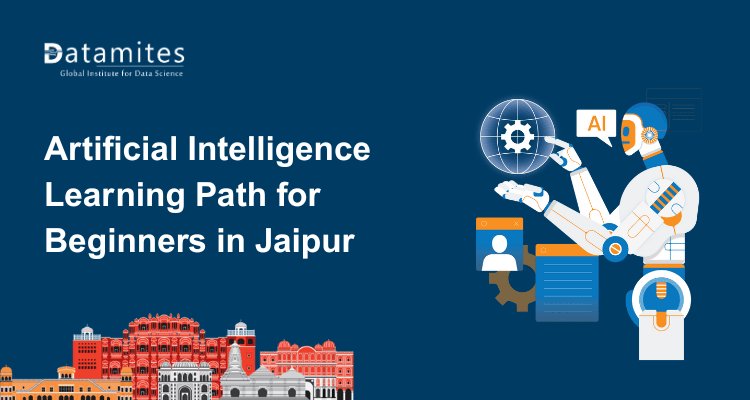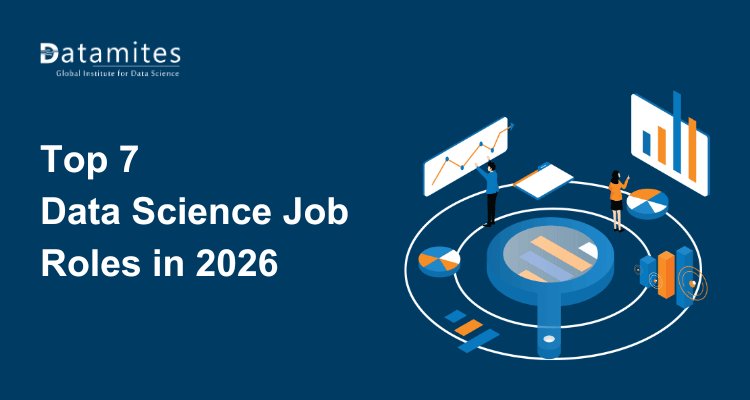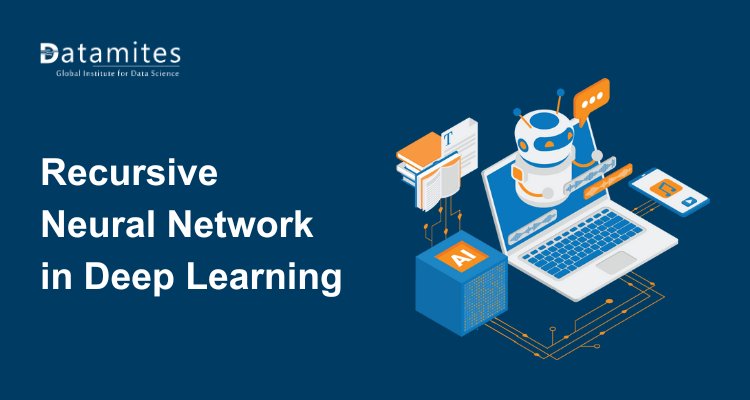Agentic AI vs Generative AI: What’s the Difference?
Agentic AI and Generative AI represent two distinct branches of artificial intelligence, each with unique capabilities and purposes. As AI continues to evolve, both approaches are expected to complement each other in complex, intelligent systems.
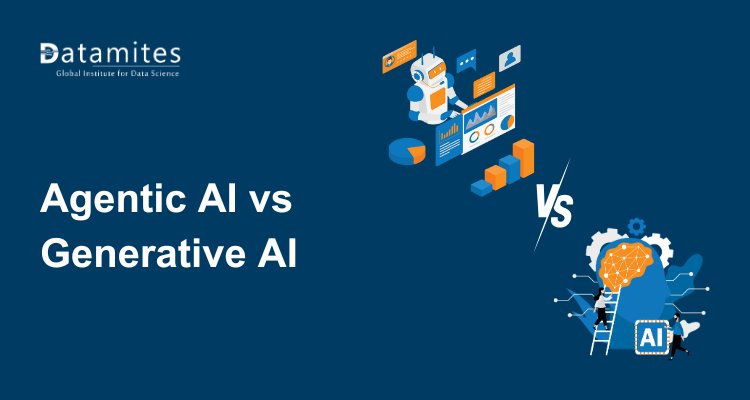
Artificial Intelligence has revolutionized how we interact with technology, creating systems that can think, learn, act, and even create. Among the many branches of AI, Agentic AI and Generative AI stand out for their unique capabilities and transformative impact. While both fall under the broader umbrella of artificial intelligence, they serve very different purposes, one is action-driven, and the other is creation-driven. In this article, we explore the key differences between Agentic AI and Generative AI, their real-world applications, and emerging trends shaping their future.
What is Agentic AI?
Agentic AI refers to intelligent systems that can perceive their environment, make autonomous decisions, and take actions to achieve specific goals. These agents operate dynamically, adapting in real-time based on continuous feedback from their surroundings.
Core Characteristics of Agentic AI:
- Autonomy: Operates independently to complete complex tasks.
- Goal-Oriented Behavior: Designed to accomplish predefined objectives.
- Environmental Awareness: Reacts and adapts to changes in its environment.
- Continuous Operation: Runs persistently, making decisions in real-time.
Examples of Agentic AI:
- Virtual assistants like Siri and Alexa that manage schedules or smart devices.
- Self-driving cars that navigate roads and avoid obstacles.
- Smart thermostats that auto-adjust based on room occupancy and temperature.
- AI-powered customer service bots that adapt to user emotions and context.
Agentic AI is widely used in robotics, automation, smart homes, and enterprise workflow systems. According to industry projections, the global AI market is expected to reach $190 billion by 2025, growing at a CAGR of 38%.
What is Generative AI?
Generative AI is a subset of AI focused on creating new content be it text, images, audio, video, or code by learning patterns from large datasets. These models use machine learning algorithms, particularly deep learning and transformer-based models, to generate human-like outputs based on prompts or input data.
Core Characteristics of Generative AI:
- Content Creation: Produces novel text, visuals, or other media.
- Prompt-Driven: Requires input to generate relevant output.
- Pattern Learning: Trains on vast datasets to understand structure and style.
- Highly Scalable: Can generate content at large scale quickly.
Examples of Generative AI:
- ChatGPT – for conversational responses and writing assistance.
- DALL·E – for AI-generated artwork and design.
- Bard, Claude – language models for answering queries and brainstorming ideas.
- MusicLM – AI-generated music compositions.
Generative AI is increasingly adopted across industries such as content creation, marketing, gaming, entertainment, and education. According to Markets and Markets, the generative AI market is set for explosive growth, expected to rise from USD 71.36 billion in 2025 to USD 890.59 billion by 2032, registering a CAGR of 43.4% during the forecast period.
Key Differences Between Agentic AI and Generative AI
Although both fall under the umbrella of artificial intelligence, Agentic AI and Generative AI have distinct characteristics and serve different purposes:
Primary Function
- Agentic AI: Executes tasks and makes autonomous decisions.
- Generative AI: Creates new content (text, images, audio, etc.) based on input and training data.
Core Capability
- Agentic AI: Focused on achieving goals and adapting to changing environments.
- Generative AI: Excels at recognizing patterns and producing creative outputs.
Interaction Style
- Agentic AI: Operates continuously in real-time with dynamic input and response loops.
- Generative AI: Works in a prompt-response format, typically generating output on demand.
Learning Method
- Agentic AI: Uses reinforcement learning and symbolic reasoning to make decisions.
- Generative AI: Relies heavily on deep learning techniques and neural networks.
Use of Data
- Agentic AI: Processes real-time data and ongoing feedback to adapt actions.
- Generative AI: Trained on large static datasets and generated based on that prior learning.
Common Examples
- Agentic AI: Smart assistants, autonomous robotics, workflow automation tools.
- Generative AI: ChatGPT, DALL·E, Midjourney, AI video editors, AI music generators.
According to Grand View Research The global artificial intelligence market size was estimated at USD 279,220.1 million in 2024 and is projected to reach USD 1,811,747.3 million by 2030, growing at a CAGR of 35.9% from 2025 to 2030.
Use Cases of Agentic AI vs Generative AI
Artificial Intelligence continues to reshape industries, and two prominent types Generative AI and Agentic AI are at the forefront of this transformation. Below, we explore the real-world applications of both.
Generative AI Use Cases
1. SEO Content Creation: Generative AI is revolutionizing how businesses approach content marketing. Organizations are using tools like large language models to generate SEO-optimized blog posts, landing pages, and web content at scale.
2. Marketing and Sales Enablement: Sales teams often face the burden of repetitive administrative tasks, which takes time away from nurturing leads. Generative AI tools, including chatbots and virtual assistants, can automate lead outreach, schedule follow-ups, and even personalize sales emails.
3. Product Design and Development: By analyzing consumer behavior, trends, and market research data, generative AI can assist companies in developing new product concepts and prototypes.
4. Customer Support Automation: AI-generated responses are now widely used to handle customer inquiries and support requests.
Agentic AI Use Cases
1. Customer Service Enhancement: Traditional chatbots often hit a wall with scripted responses. Agentic AI systems, on the other hand, can understand customer intent and emotions, adapt in real-time, and autonomously resolve issues.
2. Healthcare Monitoring and Support: Agentic AI is beginning to make waves in healthcare. One example is Propeller Health, which integrates agentic AI with smart inhaler devices.
3. Automated Workflow Management: Agentic AI can autonomously manage business operations, such as optimizing supply chains, reordering stock, and rerouting logistics.
4. Financial Risk Management: In the fast-paced world of finance, agentic AI offers a powerful solution for real-time risk assessment and portfolio optimization.
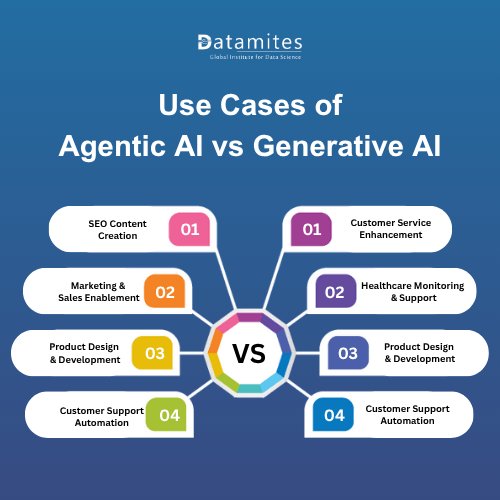
Future Trends: Agentic AI and Generative AI Converging
As AI technology matures, the line between Agentic AI and Generative AI is blurring. Future AI systems will likely combine the decision-making power of Agentic AI with the creativity of Generative AI.
Key Trends to Watch:
- Autonomous Generative Agents: Intelligent agents that perform tasks and generate new content dynamically.
- Human-AI Collaboration: Integrated tools that empower professionals to make faster, more creative decisions.
- Hyper-Personalization: AI systems that combine real-time context with personalized generative outputs.
- Ethical AI: Focus on transparency, fairness, and safety as AI adoption increases globally.
While Agentic AI specializes in autonomous task execution, Generative AI shines in creative content generation. Understanding their differences enables businesses and developers to harness the right technology for their goals. As AI evolves, expect hybrid solutions that combine both capabilities allowing machines not just to think and act but also to create and adapt. By 2030, AI is expected to increase global GDP by 26%, adding approximately $15.7 trillion to the world economy.
Artificial Intelligence Course in Chennai offers a diverse range of courses designed for students, working professionals, and AI enthusiasts. These programs typically include live projects and internships, ensuring hands-on experience and real-world application of AI concepts.
The Artificial Intelligence Course in Bangalore offered by DataMites is a comprehensive training program designed to equip learners with the essential skills and knowledge needed to thrive in the rapidly expanding AI industry. The course is structured to cater to both beginners and experienced professionals, providing flexible learning options that include online classes, offline classes, and self-learning. Accredited by globally recognized bodies such as IABAC and NASSCOM FutureSkills, the certification adds significant value to the learner's professional credentials, enhancing career prospects in the field of Artificial Intelligence.

